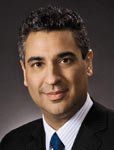- Case-Based Roundtable
- General Dermatology
- Eczema
- Chronic Hand Eczema
- Alopecia
- Aesthetics
- Vitiligo
- COVID-19
- Actinic Keratosis
- Precision Medicine and Biologics
- Rare Disease
- Wound Care
- Rosacea
- Psoriasis
- Psoriatic Arthritis
- Atopic Dermatitis
- Melasma
- NP and PA
- Skin Cancer
- Hidradenitis Suppurativa
- Drug Watch
- Pigmentary Disorders
- Acne
- Pediatric Dermatology
- Practice Management
- Prurigo Nodularis
- Buy-and-Bill
Article
Dermatology training programs court residents, seek alternative funding
Dermatology training programs continue to confront the practitioner shortage by courting residents likely to work in underserved markets, encouraging altruism and, increasingly, using nongovernmental money to fund residency slots, experts say.

Key Points
EDITOR'S NOTE: With training slots limited and patient demand burgeoning, the field of dermatology is feeling the crunch. But some programs are employing creative solutions to bring more residents into the specialty.

"With our aging population, our epidemic of skin cancer and the lack of increase in dermatologist numbers on the horizon, I'm quite concerned about the impending shortage of dermatologists," says Karen E. Edison, M.D., Philip C. Anderson Professor and chairman, department of dermatology, and director, Center for Health Policy, University of Missouri Medical Center, Columbia, Mo.; and chairman of the American Academy of Dermatology's workforce task force.
Sluggish supply and daunting demand are squeezing medical specialties across the board, sources say.

On the other hand, healthcare reform is expected to soon add 32 million formerly uninsured patients to an already strained system.
Meanwhile, the Department of Health and Human Services projects that over the next decade, the number of Americans over age 65 will grow by 36 percent - while nearly one-third of all physicians will retire, according to the AAMC.
That adds up to a predicted shortage of 45,000 primary care physicians and 46,000 surgeons and specialists in the next decade, the AAMC says. And that will mean even longer waiting times for patients.
Already, wait times for established dermatology patients seeking appointments averaged 33.9 days in 2009, versus 17.9 days for new patients, according to the American Academy of Dermatology (AAD).
And despite the burgeoning need, medical students often are closed out of dermatology - a highly prized residency.

On a larger scale, National Resident Matching Program (NRMP) data also reveal that competition for residency positions is intensifying.
Currently, says Mona Signer, M.P.H., NRMP executive director, "There are more than enough positions in the match for every U.S. senior seeking one, but not necessarily in their specialties of choice."
Among U.S. seniors who ranked only dermatology programs among their preferences, she says, 79 were unmatched. The 2010 main match included 31 first-year dermatology positions and 329 second-year positions (versus 338 total in 2009 and 306 in 2006).
"There are very few positions available for applicants who do not match, and almost none in their preferred specialties," she says.





